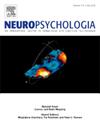月经周期中的注意力、预期和空间认知波动:对女性运动的潜在影响
IF 2
3区 心理学
Q3 BEHAVIORAL SCIENCES
引用次数: 0
摘要
目前的研究表明,经期的女运动员可能更容易发生肌肉骨骼损伤,这与整个月经周期的激素变化有关。另一项研究表明,空间认知也可能以类似的方式波动。从理论上讲,空间认知的变化可能是造成伤害的一个风险因素,尤其是在快节奏的运动中,这种运动需要精确到毫秒级的精度,才能与环境中移动的物体进行互动。然而,关于经期女性损伤风险增加原因的现有理论主要集中在生物力学机制上,很少考虑损伤风险可能的认知决定因素。因此,这项原理验证研究的目的是探索经期女性在整个生理周期中是否表现出认知过程的波动,这是一项新的以运动为导向的认知测试,旨在测量这些运动情境中假定涉及的一些心理过程。共有394名参与者完成了两次在线认知测试、情绪量表和症状问卷,间隔14天。排除后,248名符合条件的受试者被纳入分析(平均年龄:28±6岁)(男性= 96,女性(月经期)= 105,女性(避孕期)= 47)。经期女性的周期是基于自我报告的信息。认知电池被设计用来测量反应时间、注意力、视觉空间功能(包括3D心理旋转)和时间预期。采用变量旋转因子分析生成三个综合评分(误差、反应时间、个体内变异性)。采用混合模型方差分析和重复测量方差分析来检验受试者间效应和受试者内效应。男性和女性(是否使用避孕措施)在反应时间和准确性方面没有组间差异。然而,在受试者分析中显示,规律月经的女性在月经期间的表现比其他任何时期都要好,反应时间更快(10ms c.ca, p <;0.01),误差更少(p <;0.05)和较低的分散个体内变异(p <;0.05)。相比之下,他们表现出较慢的反应时间(10ms c.ca, p <;0.01)和较差的时间预期(p <;黄体期预测误差为0.01),排卵期预测误差较大(p <;0.01)。自我报告的情绪、认知和身体症状在月经期间都是最糟糕的(p <;0.01),而且有相当比例的女性认为她们的症状对她们在月经测试日的认知表现有负面影响,这与她们的实际表现不一致。这些发现表明,在一般人群中,视觉空间和预期过程可能在整个月经周期中波动,在月经期表现较好,而在黄体期表现较差。如果这些研究扩展到特定阶段认知表现与损伤发生率之间的关联,它们将支持关于自行车女运动员损伤风险决定因素的认知理论,从而为制定适当的缓解策略提供机会。本文章由计算机程序翻译,如有差异,请以英文原文为准。
Attentional, anticipatory and spatial cognition fluctuate throughout the menstrual cycle: Potential implications for female sport
Current research suggests that menstruating female athletes might be at greater risk of musculoskeletal injury in relation to hormonal changes throughout the menstrual cycle. A separate body of work suggests that spatial cognition might also fluctuate in a similar manner. Changes in spatial cognition could, in theory, be a contributing risk factor for injury, especially in fast-paced sports that require precise, millisecond accuracy in interactions with moving objects in the environment. However, existing theories surrounding causes for increased injury risk in menstruating females largely focus on biomechanical mechanisms, with little consideration of possible cognitive determinants of injury risk. Therefore, the aim of this proof-of-principle study was to explore whether menstruating females exhibit fluctuations in cognitive processes throughout their cycle on a novel sport-oriented cognitive test battery, designed to measure some of the mental processes putatively involved in these sporting situations.
A total of 394 participants completed an online cognitive battery, a mood scale and a symptom questionnaire twice, 14 days apart. After exclusions, 248 eligible participants were included in the analyses (mean: 28 ± 6 years) (male = 96, female(menstruating) = 105, female(contraception) = 47). Cycle phase for menstruating females was based on self-reported information. The cognitive battery was designed to measure reaction times, attention, visuospatial functions (including 3D mental rotation) and timing anticipation. Three composite scores were generated using factor analysis with varimax rotation (Errors, Reaction Time, Intra-Individual Variability). Mixed model ANOVAs and repeated measures ANOVAs were performed to test for between and within-subject effects.
There was no group difference in reaction times and accuracy between males and females (using contraception and not). However, within subject analyses revealed that regularly menstruating females performed better during menstruation compared to being in any other phase, with faster reaction times (10ms c.ca, p < 0.01), fewer errors (p < 0.05) and lower dispersion intra-individual variability (p < 0.05). In contrast they exhibited slower reaction times (10ms c.ca, p < 0.01) and poorer timing anticipation (p < 0.01) in the luteal phase, and more errors in the predicted ovulatory phase (p < 0.01). Self-reported mood, cognitive and physical symptoms were all worst during menstruation (p < 0.01), and a significant proportion of females felt that their symptoms were negatively affecting their cognitive performance during menstruation on testing day, which was incongruent with their actual performance.
These findings suggest that visuospatial and anticipatory processes may fluctuate throughout the menstrual cycle in the general population, with better performance during the menstrual phase and poorer performance during the luteal phase. If these extend to associations between phase-specific cognitive performance and injury incidence, they would support a cognitive theory of determinants of injury risk in cycling female athletes, opening an opportunity to develop mitigation strategies where appropriate.
求助全文
通过发布文献求助,成功后即可免费获取论文全文。
去求助
来源期刊

Neuropsychologia
医学-行为科学
CiteScore
5.10
自引率
3.80%
发文量
228
审稿时长
4 months
期刊介绍:
Neuropsychologia is an international interdisciplinary journal devoted to experimental and theoretical contributions that advance understanding of human cognition and behavior from a neuroscience perspective. The journal will consider for publication studies that link brain function with cognitive processes, including attention and awareness, action and motor control, executive functions and cognitive control, memory, language, and emotion and social cognition.
 求助内容:
求助内容: 应助结果提醒方式:
应助结果提醒方式:


